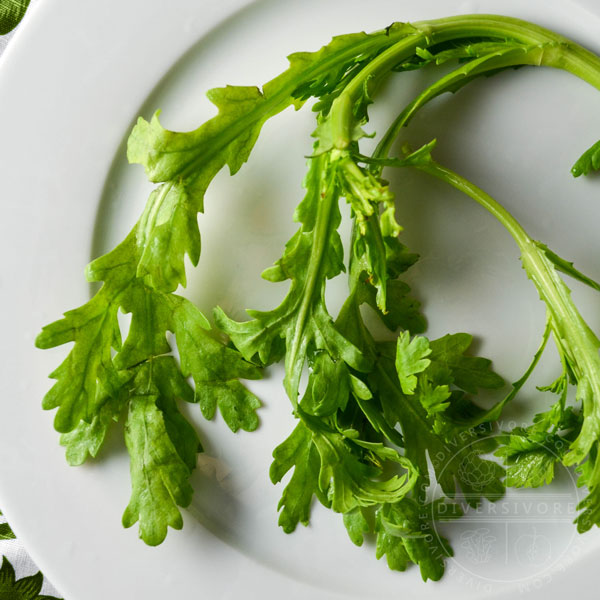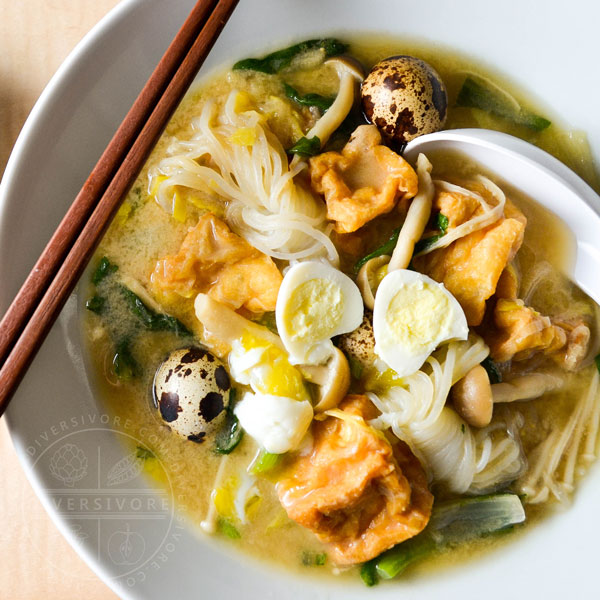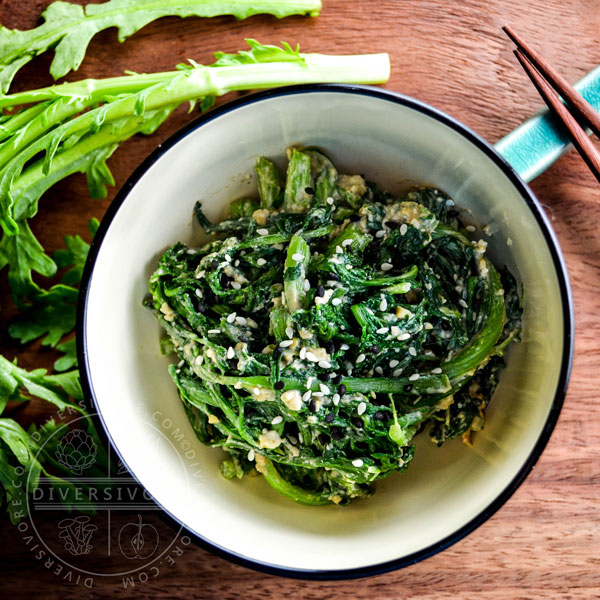How to Find, Choose, & Use
Garland Chrysanthemum
a.k.a. Tong Ho, Shungiku

Share this Guide
The Basics
What Is It?
A leafy green member of the daisy family (Asteraceae). Native to the Mediterranean but somewhat infrequently used there, its distinctive flavour is used to great effect primarily in Asian cooking.
Seasonality
Available YEAR-ROUND, but best in winter and spring.
Flavour Profile
Green/floral/bitter; distinctive and strong for a green vegetable
Other Names
English - Chrysanthemum greens, edible chrysanthemum, chop suey greens, crown daisy, Japanese greens; tong-ho (choy) (from Cantonese)
Chinese - 茼蒿 - tong ho (Cantonese), tónghāo (Mandarin)
Japanese - 春菊 - shungiku
Korean - 쑥갓 - ssukgat
Hebrew - חרצית - chartzith
Greek - μαντηλίδα - mantilida
Garland Chrysanthemum FAQs
What Can I Substitute?
In terms of flavour, nothing. The taste is quite distinctive. Spinach is relatively similar to the leaves in cooking terms, but completely different in flavour.
Can I Eat the Flowers?
Yes, absolutely! The entire above-ground portion of the plant is edible. In general you're only likely to encounter the the small, unopened flowers on the younger stalks sold in grocery stores, and these can be cooked right along with everything else.
Can I Eat Any Kind of Chrysanthemum?
No. All chrysanthemum flowers are edible (though these vary in flavour), but the greens of other decorative chrysanthemum varieties are generally considered inedible (or at least not worth eating).
Can I Eat it Raw?
Yes, though this is definitely a less common choice. The flavour is likely to be considered a bit too intense for most raw applications, though very small/young leaves are peppery and mild.
How-To
Find
Asian grocery stores, especially Korean, Japanese, and Chinese stores.
Choose
Look for bright, fresh looking leaves without obvious tears or signs of wilting. Avoid leaves with yellow edges as they’re likely to be bitter. Choose smaller leaves/stems if possible, as they’ll be more tender.
Prep
Difficulty: Easy - Simply wash the leaves and stems gently in cold water. Particularly large, tough stems can be discarded. Leaves can be left whole or chopped, depending on the requirements of a particular dish.
Use
Eaten cooked or raw, though cooked is much more common.
Store
Short Term: Refrigerate (unwashed, 3-7 days in a breathable bag in the crisper)
Long Term: Blanch in boiling water 2 mins, drain and rinse with cold water, then freeze.
Culinary Info
Flavour Profile
Green/Floral/Bitter - A bit tricky to describe, the flavour is a mix of leafy green and the distinctive floral taste of chrysanthemum (picture chrysanthemum tea, if you’ve had it). The flavour is fairly bold and powerful, especially for a leafy green.
Substitutions
None. The flavour of garland chrysanthemum is very distinctive. Spinach is texturally similar, but completely dissimilar in terms of flavour.
Cuisines
Frequently found in East Asian (and especially Chinese, Korean, and Japanese) soups, stews, hotpots, etc. Young, tender leaves can be used in salads and other raw dishes.
Flavour Pairings
Pairs very nicely with tofu, root vegetables, miso, and mushrooms. As a strong flavour, it needs to be paired carefully, but as a general rule it works well with earthy flavours, stocks. Seafood is a less common pairing, but a very nice one to work with.
Varieties
There are two important varieties to note:
Small Leaf - the most common variety, shown in the photos here.
Large or Round Leaf - an old Chinese variety with largely, brighter, somewhat oak-leaf shaped foliage.
For more on these varieties and their use, click “Need More Detail” below.
More Info
Nutrition
Exceptionally high in Vitamin K with a moderate amount of iron (see below).Nutrition FactsGarland Chrysanthemum - 100 g (3.5 oz)Amount Per ServingCalories 24 Calories from Fat 9% Daily Value*Fat 1g2%Sodium 53mg2%Potassium 569mg16%Carbohydrates 3g1%Fiber 2g8%Sugar 2g2%Protein 2g4%Vitamin A 750IU15%Vitamin C 1.7mg2%Calcium 120mg12%Iron 3.2mg18%* Percent Daily Values are based on a 2000 calorie diet.Top-To-Tail
The entire above-ground plant is eaten, including leaves, stalks, and flowers.
GMO Status
Non-GMO
Health & Science
Unlike many other leafy greens, garland chrysanthemum hasn’t received much research attention. It seems to be a relatively unremarkable, albeit healthy food.
Organic vs. Conventional
Conventionally grown garland chrysanthemum is more commonly available than organic. Organic seed varieties are increasingly common, and the plant’s ease of cultivation makes home-growing a viable possibility.
Share this Guide



